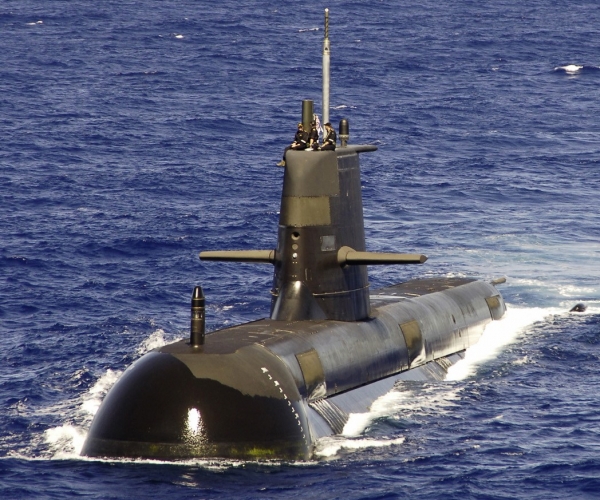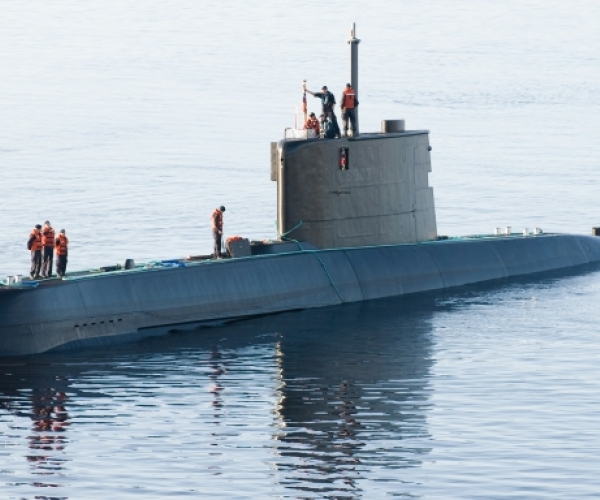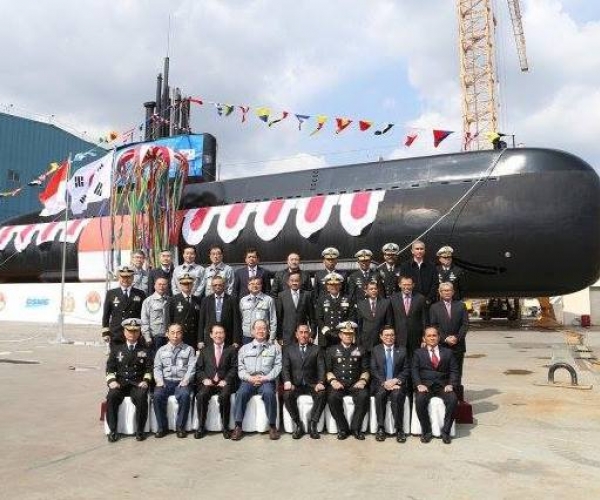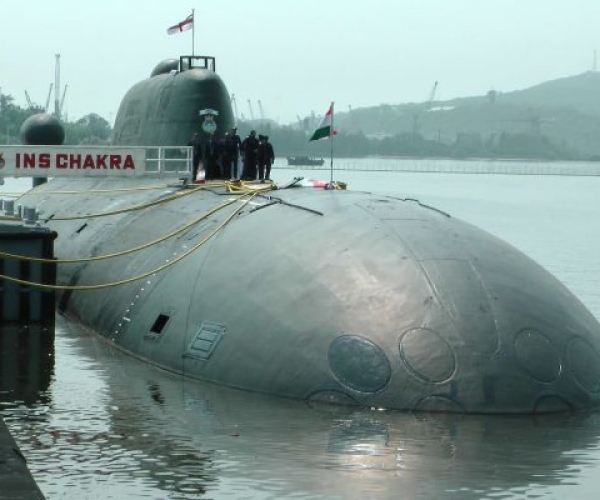Boom In Global Submarines Market, $70 Billion Deals In Offing

With over 451 submarines in service worldwide, the global market of submarines fleet is expected to surge up to $100 billion for the next decade.
According to Technavio’s Global Submarine Market 2016-2020, the submarine market is expected to grow at a moderate CAGR of more than 4% during the forecast period. The growing demand of nuclear-powered submarines has been the key growth for this market.
Global submarines projects estimated $69.3 billion are currently underway. The key vendors are DCNS (France), Thyssenkurp Marine Systems (Germany), South Korea’s Daewoo Shipbuilding and Marine Engineering (DSME), PT PAL Indonesia, Russia’s United Shipbuilding Corp (USC), Reliance Defense (India) and BAE Systems (UK).
The Australian government this week committed to spending A$50 billion (USD 37.5 billion) on a fleet of 12 new submarines to replace the existing Collins-class submarines , contracted to French company DCNS and to be built in South Australia.
Australia will get to possess the new Barracuda-class submarines which will be built to its specifications for a conventional, non-nuclear powered submarine in 8-10 years from the signing of the contract.
The submarines will cost $20bn to build and $30bn to maintain over their expected lifetime of 30 years. According to the government’s 2016 Defence White Paper, around half the world’s submarines will be operating in the Indo-Pacific region by 2035.

Norway has been looking for a partner for its new generation submarine project. Germany’s Thyssenkurp Marine Systems and France’s DCNS has been shortlisted for the country’s replacement of six Ula-class submarines, which will gradually reach their end of life in the 2020s. During 2016, Norway has planned to finalize a recommendation on the future submarine capability.
For the Norway submarine project, DCNS has proposed the latest generation of its sea-proven conventional-propulsion Scorpene submarine. Its last evolutions represent the state-of-the-art in submarine design and construction and benefit from the latest technologies derived from attack submarines operated by the French Navy.
Its final configuration will be adapted to meet the specific needs of the Norwegian Navy and will feature advanced mature technologies in particular in the field of acoustic discretion, innovative energy production and storage and reduced manning operations.
Thyssenkurp is offering a version of the Klasse 218SG designed for Singapore. Thyssen Nordseewerke-built 59m-long Ula-class submarines have a surfaced and submerged displacement capacity of 1,040t and 1,150t respectively, with a beam of 5.4m and a draft of 4.6m, and capacity for a crew of 21.

PT PAL Indonesia, a state-owned shipbuilding company, is planning to launch the facility to build submarines in September this year, which will be the first in Southeast Asia.
At present, PT PAL is cooperating with South Korea to build three submarines which is serving as a training ground for Indonesian human resources. A total of 206 workers would undergo training in South Korea and until now 130 of them have already finished.
PT PAL and South Korea’s Daewoo Shipbuilding and Marine Engineering (DSME) signed a contract worth $1.1 billion to build Type 209/1400 Chang Bogo-class (a license-built variant of the 209) diesel-electric attack submarines for Indonesian Navy.
According to the contract, the first two submarines are to be built in South Korea, whereas the last vessel will be constructed under license by the Indonesian state-owned shipbuilder PT PAL in Surabaya, Indonesia’s second-largest city located on the northeastern coast of Java island.
Indonesian Chang Bogo-class sub will have an operational range of around 10,000 nautical miles, a surface top speed of 21 knots (10 knots while submerged), feature eight weapon tubes for torpedoes and guided missiles, and will be equipped with “cutting edge electronic defense and radar signal detection systems.” The boats will be operated by a crew of 40.

In an attempt to bolster the maritime prowess, Modi-led government announced the indigenous construction of seven stealth frigates and six nuclear-powered submarines at a cost of about INR 1 lakh crore (USD 15 Billion) in February 2015.
The Indian Navy’s Submarine Design Bureau is working on a design for the Nuclear powered attack submarines (SSNs) project estimated INR 90,000 Crore (USD 13.5 billion). It plans to build at least six SSNs in India and to be inducted in next 15 years.
At present, the only nuclear powered platform in service is the INS Chakra, an Akula class SSN on lease from Russia.
India’s Reliance Defense has entered into a strategic partnership with Russian United Shipbuilding Corp (USC) and Rosoboronexport eyeing multi-billion dollar surface vessel manufacturing, refitting and modernization program for the Indian Navy.
India is planning to manufacture four ‘Talwar’ class frontline warships costing over INR 30,000 crore (USD 4.5 billion) for the navy. The four frigates will be entirely built in India through the Make In India route.
The agreement also focuses on modernization and re-fitting of all Russian-origin surface warships of the Indian Navy at Reliance’s newly acquired facility in Pipavav. Indian Navy currently has 35 Russian-made surface ships in its fleet.
Reliance’s Pipavav shipyard is also one of the contenders for India’s plans to build six conventional submarines under its Project 75i costing an approximate of INR 60,000 crore (USD 9 billion).
The tender for the project would be a ‘buy and make (India)’ one, which implies tie-ups for technology with foreign collaborators with substantial manufacturing in India.
Project 75i is designed to purchase 6 next generation diesel submarines with Air Independent Propulsion System (AIP) technology for Indian Navy by 2022.
BAE Systems has been awarded a £201 million (USD 230 million) contract by the UK Ministry of Defence (MoD) to design successor of the Royal Navy's Vanguard class submarines.
The contract is to design the new class of submarines, which will carry the UK's independent nuclear deterrent, including the layout of equipment and systems, and to develop manufacturing processes.
The funding is part of the overall £3.3 billion (USD 3.7 billion) package announced in the last parliament for the Assessment Phase of the Successor submarine programme. Four Vanguard submarines – which currently maintain the UK’s nuclear deterrent - will be replaced from the early 2030s.









